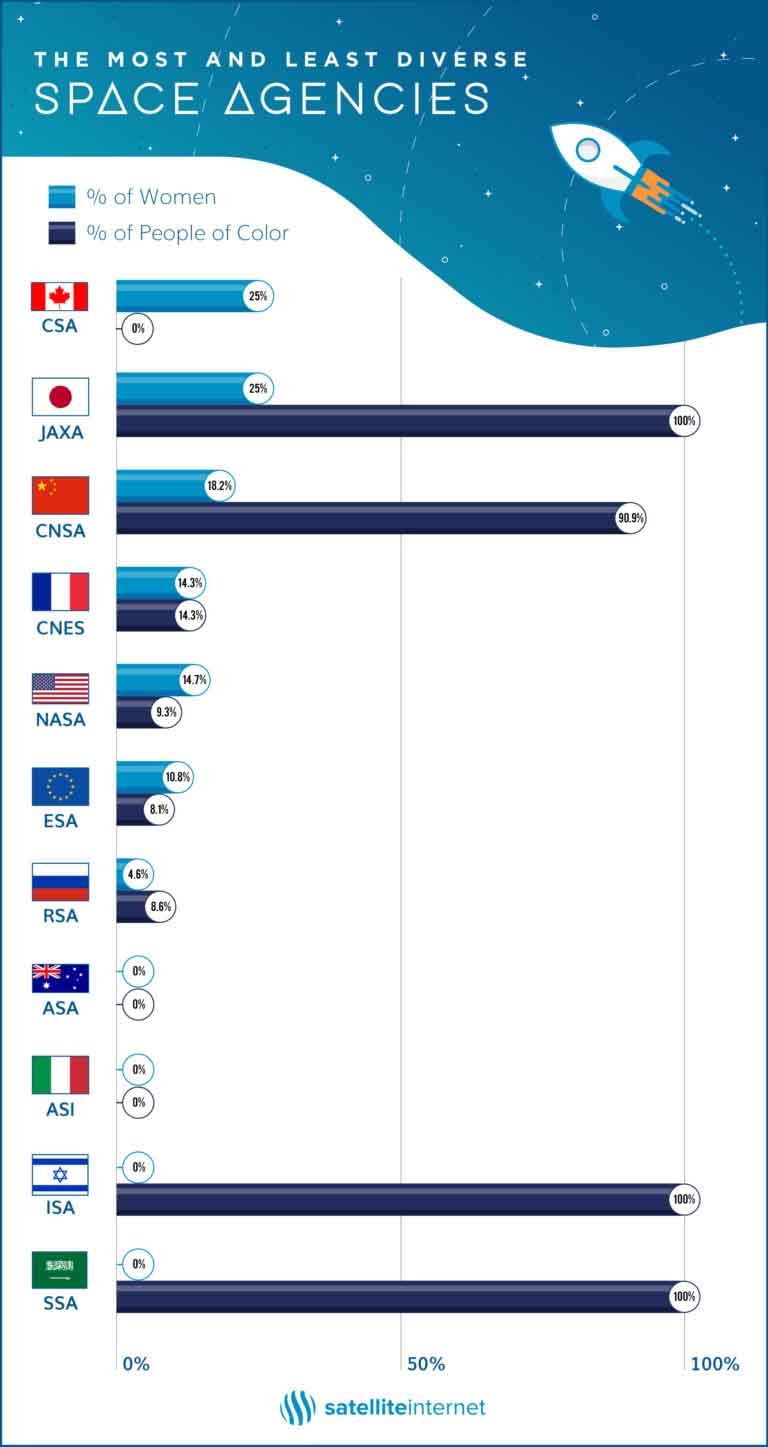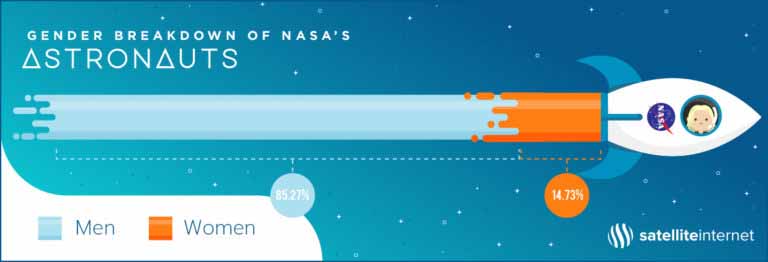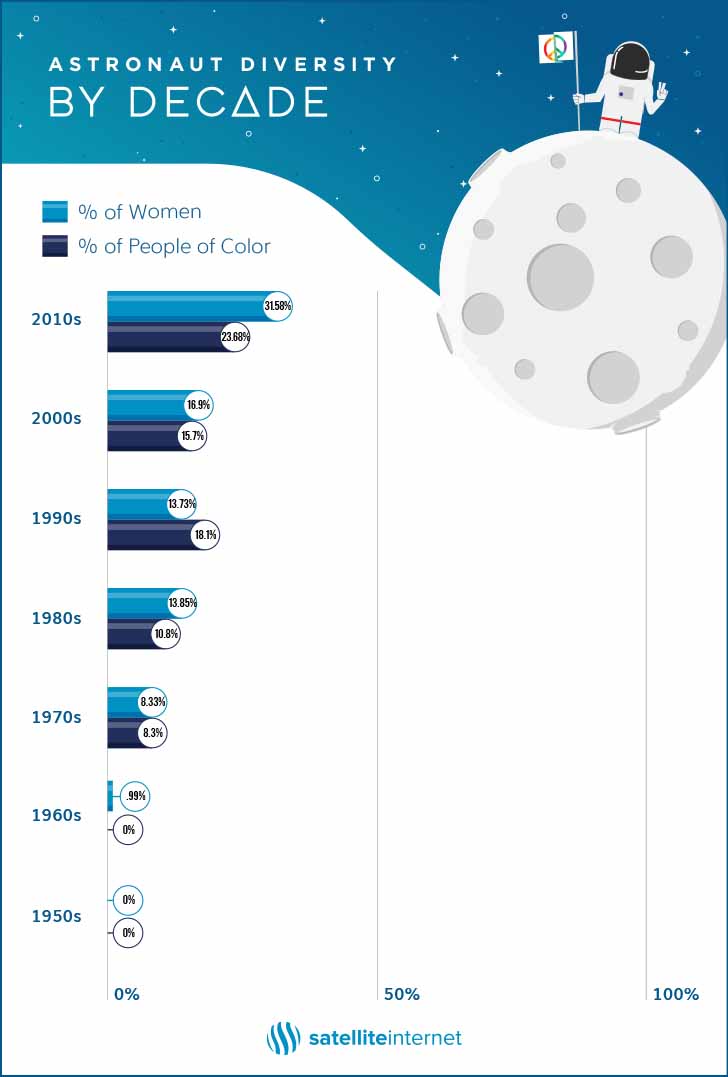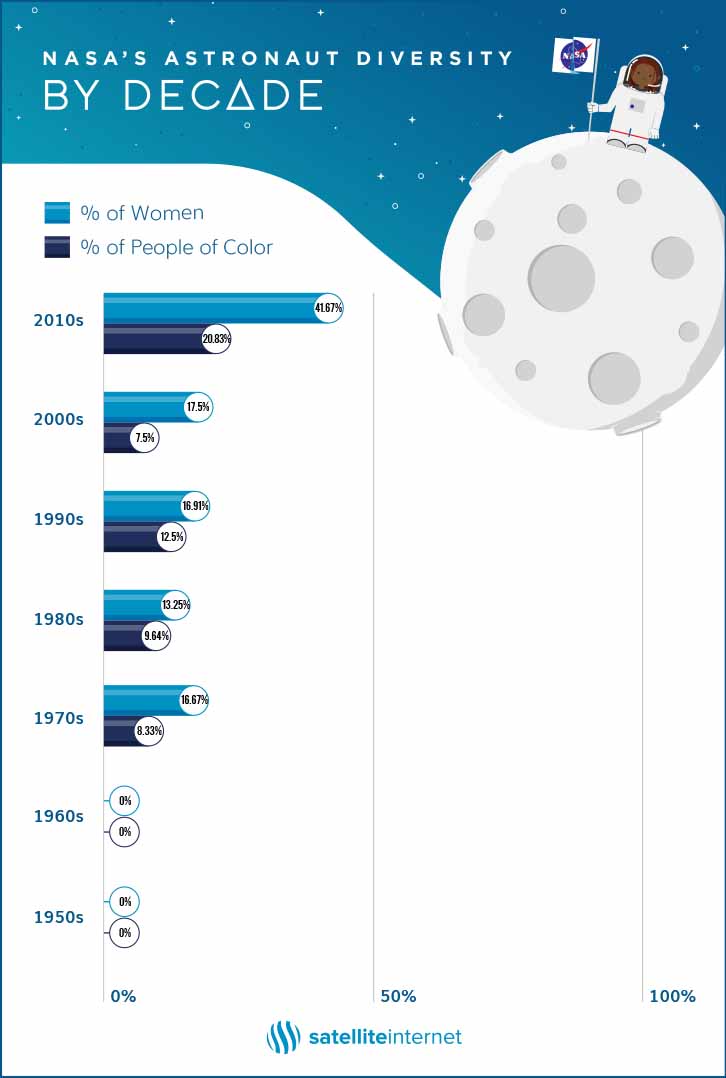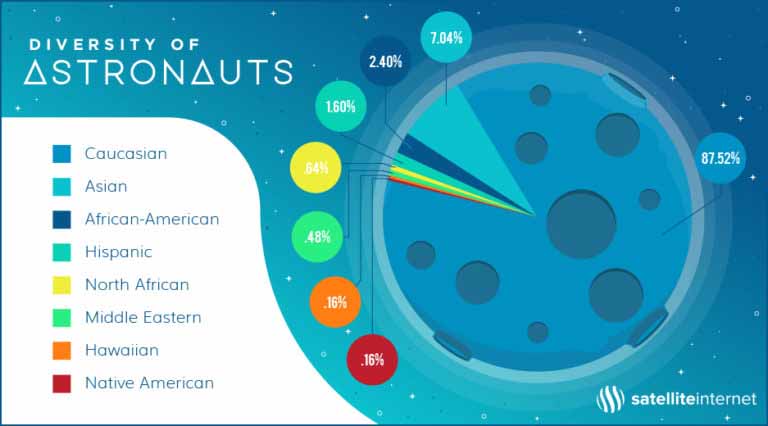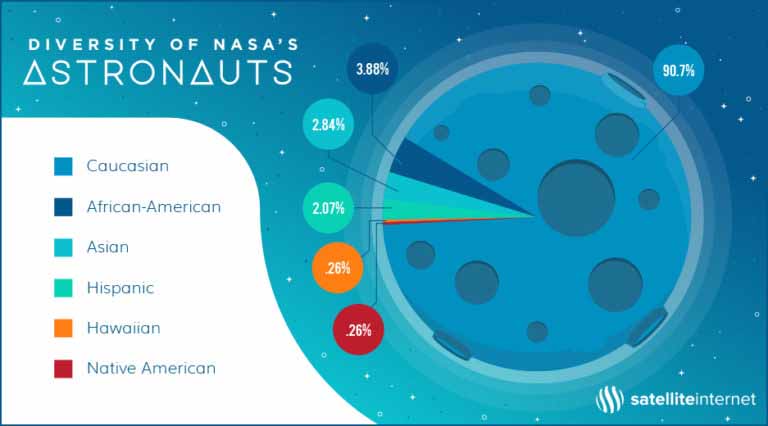- 5% women
- 9% people of color
It’s no surprise to many of us that Russia’s astronauts achieved a multitude of firsts in space. Many of these include astronauts from other communist countries, like Vietnam and Cuba. This reflects the Soviet Union’s interest in space travel and its influence on other communist countries back in the days of the Cold War.
Remember history class? The Soviet Union collapsed on December 26, 1991. But Russia has continued its tradition of space exploration by teaming up with other countries on the International Space Station program.
Perhaps the most famous Soviet astronaut, Valentina Tereshkova was the very first female in space. She piloted the Vostok 6 spacecraft in 1963.
Other notably diverse Russian and Soviet astronauts include Yi So-yeon, the first Korean astronaut (and first female Korean astronaut); Anousheh Ansari, the first Iranian in space (and first woman to self-fund her flight to the International Space Station); Arnaldo Tamayo Méndez, the first Cuban citizen and first person of African heritage in space; Phạm Tuân, the first Vietnamese citizen and first Asian in space; and Jügderdemidiin Gürragchaa, the first Mongolian in space.
